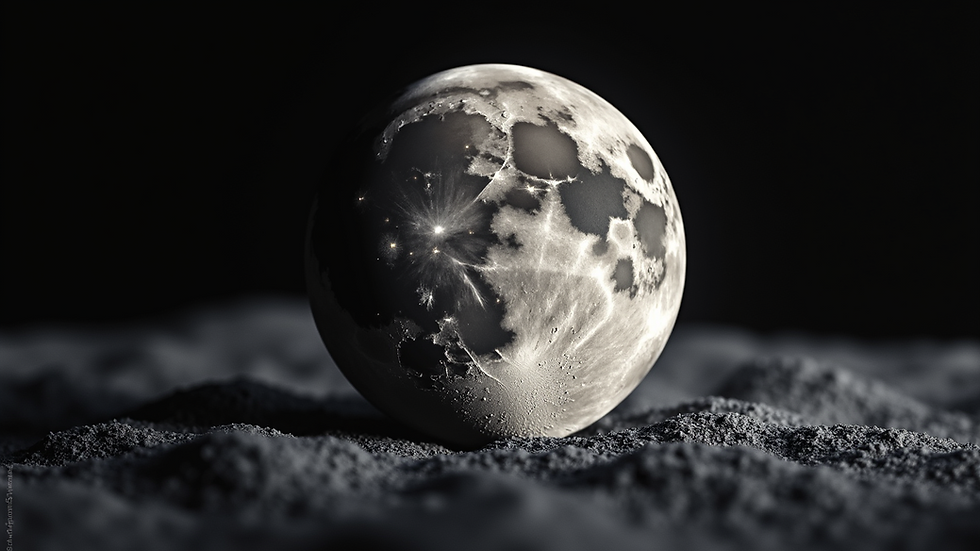Why We Always See the Same Side of the Moon: The Science of Tidal Locking
- Sanchit Kamat
- Aug 22
- 3 min read
Have you ever noticed that, no matter where you are on Earth, you always see the same side of the Moon? It’s almost like the Moon has a favorite face it wants to show us while the other side remains a mystery. This captivating phenomenon is called tidal locking, and it has intrigued people for centuries.
What is Tidal Locking?
Tidal locking occurs when an astronomical body takes the same amount of time to rotate on its axis as it does to orbit another body. For the Moon, this means it rotates once on its axis in the same time it takes to complete one orbit around Earth—about 27.3 days. Because of this synchronization, we only see one hemisphere of the Moon from our vantage point on Earth.
Think of two dancers moving in perfect harmony, each mirroring the other's movements. As one dancer turns, the other does too, ensuring they always face each other. This image captures how the Moon and Earth interact through gravitational forces to create tidal locking.
The Role of Gravity and Orbital Motion
So, how does this synchronization happen? It all comes down to gravity and orbital motion. When the Moon formed about 4.5 billion years ago, it likely rotated much faster. However, Earth's gravitational pull created tidal forces that worked on the Moon. These gravitational forces caused the Moon’s shape to stretch slightly, creating a bulge.
Over millions of years, this gravitational interaction between Earth and the Moon slowed the Moon’s rotation until it matched its orbital period. This relationship is like two gears locking together; once they fit, they move in unison. This gradual process is a prime example of how celestial bodies influence each other over time.
The Mysterious Far Side of the Moon
For many years, the far side of the Moon remained a mystery. It was not until 1959 that the Soviet spacecraft Luna 3 sent back the first images of the hidden surface. We learned that the far side is rugged and cratered, which contrasts sharply with the smooth plains of the near side.
This discovery sparked curiosity and led to speculation about the geological composition of the far side. In fact, features such as the South Pole-Aitken Basin, one of the largest impact craters in the solar system, can be found there. Understanding this hidden landscape may provide insights into the Moon's history and evolution.

Tidal Locking in the Solar System
Interestingly, tidal locking isn’t unique to the Moon. Many moons in our solar system are also tidally locked to their planets. For example, all of Jupiter's four largest moons—Io, Europa, Ganymede, and Callisto—show the same face to the giant planet. Additionally, more than 60% of the moons in our solar system are thought to be tidally locked. This is a common phenomenon in celestial mechanics, highlighting the intricate dance of gravitational forces at work.
A Deeper Understanding of Our Cosmic Neighbor
The fact that we always see the same side of the Moon shapes our understanding and appreciation of this celestial body. It invites us to ponder the mysteries of space and the forces that govern it. Tidal locking is much more than a scientific curiosity; it reminds us of the dynamic relationships between celestial bodies.
As we continue to explore the universe, the Moon remains a constant companion, inspiring curiosity and wonder. Whether you’re gazing at it on a clear night or reading about its secrets, the Moon’s tidal locking serves as a window into understanding the complexities of our solar system and beyond. So next time you look up at the night sky, take a moment to appreciate the Moon and the fascinating science behind why it always shows us the same face.



Comments